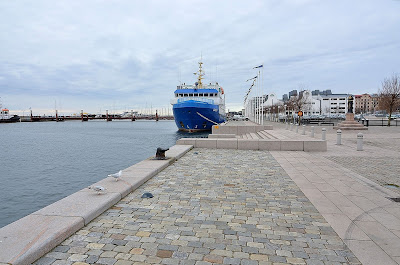 |
| The title page of the British petition. |
Before independence in 1917, Finland had been part of Sweden for over 600 years, until Sweden in 1809 lost Finland to Russia. From the Finnish point of view, it was important that Czar Alexander I granted Finland the status of an autonomous Grand Duchy within the Russian Empire.
In the end of the 19th century Czar, Nicholas II, influenced by Russian nationalists, instigated a process of Russification, which was met with strong resistance in Finland, first passive, and later active. On 15 February 1899, Czar Nicholas signed a document - the February Manifesto - which fundamentally curtailed Finland's autonomy.
The Finnish Estates declared the Manifesto to be invalid in Finland.
Finnish historians Eino Jutikkala and Kauko Pirinen describe the events that followed in their book "A History of Finland" (1996):
"Politically vigilant of old, the university students skied from farm to farm and from cottage to cottage across the farflung, snowbound land and, in slightly more than a week, collected 523,000 signatures on a protest addressed to the Czar, petitioning him to bring the provisions of the Manifesto into harmony with the constitutional laws of Finland.This civic protest,in which nearly half the adult population took part, was an amazing demonstration of political alertness and unanimity.
"A deputation of five hundred men set forth to deliver the petition and the signatures, filling many volumes, to the Czar personally. Nicholas II, however, instructed the Minister Secretary of State to tell the deputation: 'I shall not, of course, receive them, although I am not angry with them, either'."
"The name of Finland and an awareness of the peril threatening her political status spread, because of the Manifesto, throughout the civilized world. No less than 1,063 scientists, writers and artists in different European countries drew up a petition addressed to the Czar, entitled 'Pro Finlandia', which was entrusted to a deputation under the chairmanship of Senator Trarieux of France for delivery to Nicholas II."
"'Scarcely a single famous name is missing from it,' said the embarrassed minister of the court eying the petition. After long deliberation, the Czar nevertheless refused to receive the international deputation. On their way back home through Finland, the members of the deputation, who represented the intellectual elite of the world, were accorded an idolatrous reception, the like of which, in the words of one member, now Czar was likely to experience in that country for a long time."
It is possible that the international petition slowed down the rate of Russification somewhat in Finland. However, for the Finns the greatest significance of the petition was that it mobilized a sense of civic awareness among common people, which was of great importance during the years that followed.
The "Pro Finlandia" petition, with all the signatures, was later published in book format. As you can see from the samples shown here, many of the national petitions were beautifully designed works of art:
This is the text accompanying the British petition, which was signed by e.g. Florence Nightingale and Thomas Hardy:
The famous writers Anatole France and Emile Zolá were among the signatories in France:
In Norway, the petition was signed e.g. by Henrik Ibsen:
 |
| The first page of the Swedish petition. |
 |
| The first page of the Italian petition. |
 |
| The initial page of the Dutch petition. |
 |
| The title page of the Norwegian petition. |
 |
| A page from the Danish petition. |











































